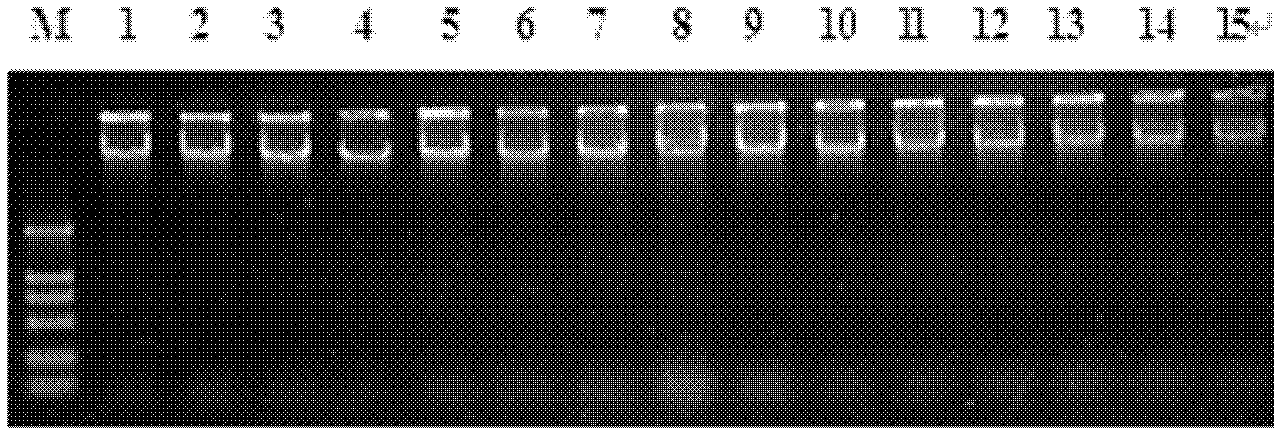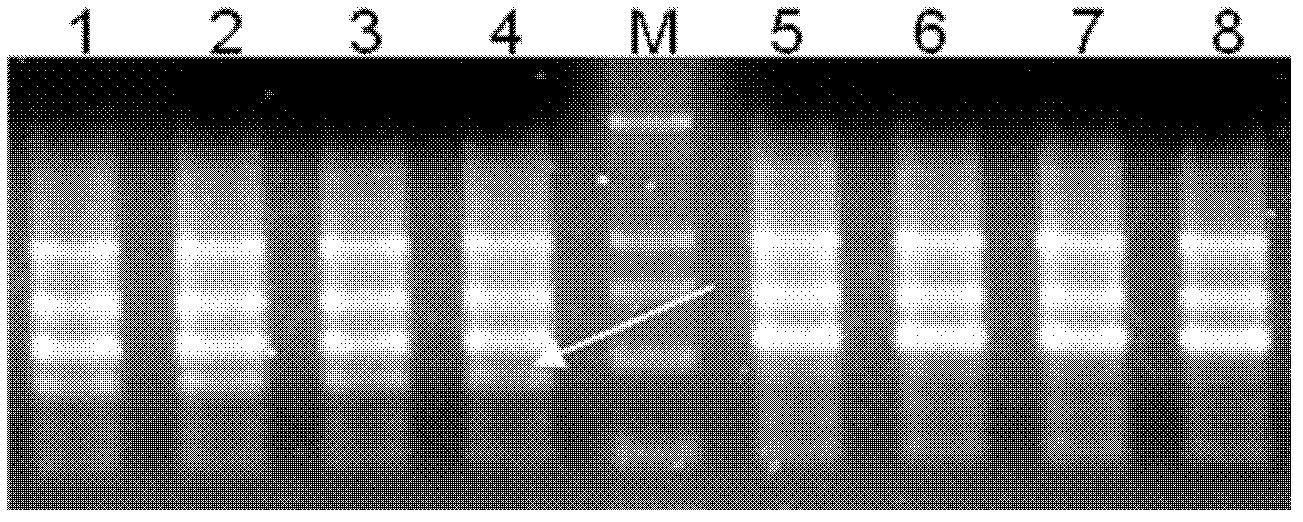Radish cytoplasmic male sterility molecular markers and method for assisting selective breeding using same
A technology of cytoplasmic male sterility and assisted selection, which is applied in biochemical equipment and methods, microbe measurement/testing, DNA/RNA fragments, etc., and can solve the problems of slow breeding process, time-consuming and laborious, long cycle, etc.
- Summary
- Abstract
- Description
- Claims
- Application Information
AI Technical Summary
Problems solved by technology
Method used
Image
Examples
Embodiment Construction
[0055] In this example, the cytoplasmic male sterile material of Baiyuchun radish was taken as the research object, of which 3 copies of BC1 generation: B20×A20, B21×A21, B30×A30 and 4 copies of F2 generation: A20-1, A20-2, A21- 2, A30. The B20×A20 population was used as marker screening material.
[0056] The study used RAPD technology to screen the specific markers related to radish cytoplasmic male sterility, further cloned and sequenced the specific fragments, and converted them into SCAR markers, and calculated the linkage distance of the markers based on the segregation performance of the markers in the verification population. and SACR markers for molecular breeding.
[0057] First, analyze the genetic law of the sterile material through the fertility performance, then screen the segregated population with RAPD primers, clone and sequence the specific fragment and convert it into a SCAR marker, and then calculate its genetic distance in the population to verify its rel...
PUM
 Login to View More
Login to View More Abstract
Description
Claims
Application Information
 Login to View More
Login to View More - R&D
- Intellectual Property
- Life Sciences
- Materials
- Tech Scout
- Unparalleled Data Quality
- Higher Quality Content
- 60% Fewer Hallucinations
Browse by: Latest US Patents, China's latest patents, Technical Efficacy Thesaurus, Application Domain, Technology Topic, Popular Technical Reports.
© 2025 PatSnap. All rights reserved.Legal|Privacy policy|Modern Slavery Act Transparency Statement|Sitemap|About US| Contact US: help@patsnap.com



